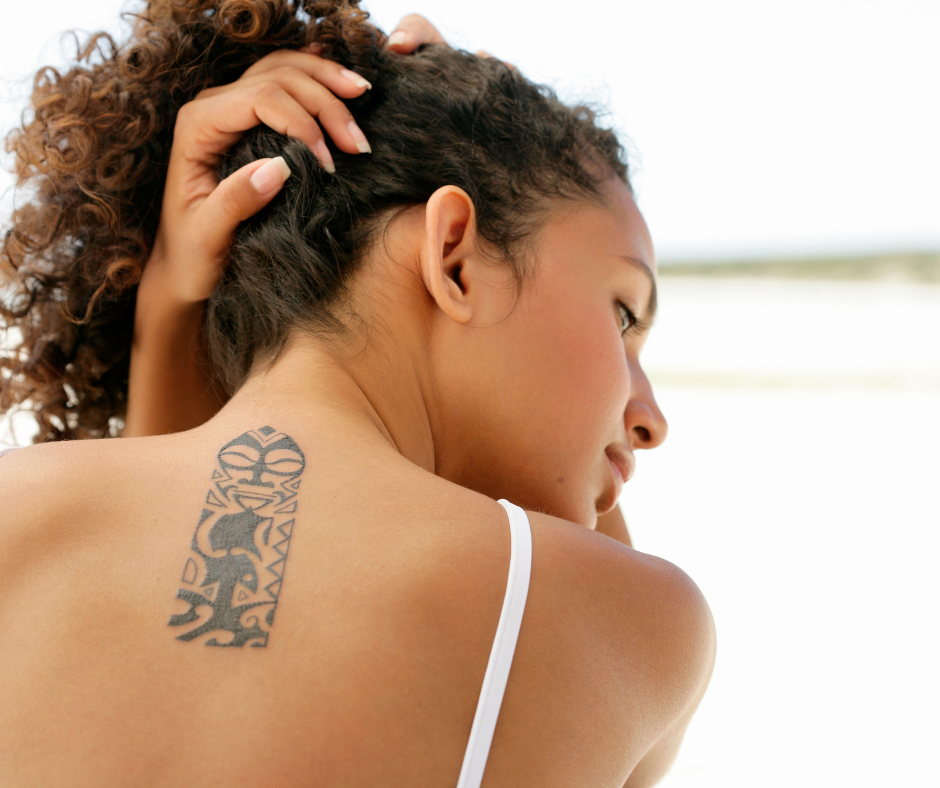Pagan Tattoos: Spiritual Meanings and Empowerment
Cultures around the world have practiced tattooing in many different forms. Deciding to get a tattoo and what the design should be is a complex process (or should be).
Tattoos are long associated with pagan beliefs and culture. Modern pagans may want to honor their ancestors, express their beliefs, or embody the magical qualities of the tattoo.
In this article, I cover history, pros/cons, and magic in tattoos.
Purpose of Tattoos
Amulets
Art
Declarations of Love
Healing
Protection
Spiritual
Status Symbols
Form of Punishment
African pagan design
Why Get A Pagan Tattoo?
Pagans get tattoos for many reasons.
Tattoos are a sumbol of your beliefs and values.
Getting a tattoo is a way of following the time honored traditions of our ancestors.
You may wish to have a Wiccan saying or a line from the Havamal tattooed on your arm - just as Christians often have bible verses.
History of Tattoos
Iceman
The famous Iceman found in the Italian Alps is perhaps the oldest representation of tattooing. He has been carbon-dated at around 5,200 years old.
Professor Don Brothwell of the University of York has examined the Iceman and feels his tattoos are a form of healing since they are around his joints where he had arthritis.
Egyptian
There are several examples of tattoos on Egyptian mummies (see my article). These tattoos are predominantly on the thighs of females. Once assumed to be slaves or prostitutes by male archaeologists we now know that they were higher-ranking women.
In fact, one woman has been identified as the high-ranking Priestess Amunet. These tattoos are now believed to be a form of protection or amulet to safeguard women during pregnancy and childbirth.
The Gebelein Mummies found in Egypt date back to 3400 BCE and have the oldest figure tattoos. They are believed to be a bull and barberry sheep and archaeologists feel they were symbols of strength.
Indigenous
In Siberia, a 2,400-year-old body of a Scythian male was found to have mythical animals tattooed on his arms.
Indigenous cultures across the Americas practiced tattooing. The Cree used tattoos for medicinal purposes, as well as to show status and accomplishment.
Native American tattooing is making a comeback in many tribes. Sage LaPeña, a Wintu teacher and medical herbalist with the Indian Health Services in Northern California has traditional facial tattoos.
Norse
We do not have a lot of evidence of persons with tattoos who lived during the Viking Age (as is often depicted in movies). Archaeological evidence of course relies on skin being preserved such as in the mummies and Iceman discussed above.
Ahmad ibn Fadlan, a 10th-century explorer did write about the Germanic and Slavic people living in Eastern Europe as he crossed from Bagdad to explore Russia. He made many accounts of the daily lives and descriptions of the people he encountered.
You can read our article 16 NORSE SYMBOLS AND WHAT THEY MEAN if you want some ideas for tattoos.
Captain Cook
Captain James Cook, a British explorer and navigator, brought the practice back from Tahiti in 1769. He was fascinated with the indigenous cultures he encountered on his voyages yet like many Europeans of his time felt he was superior to the native people. He was killed in 1779 for being part of a plot to kidnap the Hawaiian chief Kalaniʻōpuʻu l.
One aspect of these cultures that deeply intrigued Cook was the art of tattooing. Throughout his expeditions, Cook documented exquisite examples of tattooing across the Polynesian islands, recognizing the significance of these indelible marks on the skin. He observed how tattoos served as personal identifiers, symbols of status, and guardians of ancestral heritage.
Cook's encounters with tattooed individuals inspired him to appreciate this ancient form of body art, igniting his own curiosity and understanding of the cultural significance behind each design. His observations and discussions on tattooing played a vital role in introducing this unique art form to the Western world, forever intertwining James Cook's legacy with the intricate and meaningful world of tattoos.
Some pagans choose to have their familiars or spirit animals as tattoos or animals that symbolize strength or wisdom.
PRO’s of Pagan Tattoos
Cultural identification
Share your spirituality
Connect with God/Goddess
Magical powers
Connect with spirit animal
CONS of Pagan Tattoos
Discrimination in the workplace
Risk of cultural appropriation
Social stigmatization
Association with repression and ownership
Individuals often change and evolve over time
Tattoos and Magic
Traditionally many cultures used tattoos to embed magical powers in the person. Today we often have a ritual around receiving a tattoo that strengthens its power.
As an ancient art form a remarkable confluence of spirituality and self-expression happens during the act of tattooing. These intricate designs etched onto the skin hold a mysterious connection to the mystical realms, granting individuals extraordinary abilities beyond the realms of ordinary imagination.
The artwork is carefully crafted to resonate with the individual's inner essence, unlocking a deep connection to the unseen forces that pervade our universe.
Each symbol, each stroke of the tattooist's needle, is imbued with intentions and spells unique to the desired magic. However, remember that you need to communicate with your tattoo artist and discuss the intentions and spells to be performed.
Before getting inked you will want to cleanse your body.
Through chanting, meditation, and visualization you can connect with the energy of your tattoo ensuring the tattoo becomes a living representation of your personal journey and connection to the divine.
Tattoos representing elemental powers often take the form of intricate designs, depicting flames, waves, or swirling winds that correspond to elements during the tattooing.
Talk to your tattoo artist about having a small space next to where you will be sitting. In this space, you could place a candle or some crystals, or a statue of a deity. You can invoke the energies of the elements, call upon your deities, and connect with your guiding spirits.
For example, a candle in an appropriate color that has been dressed for the occasion
Check out my course in Candle Magic to learn how to prepare candles for spells.
Learn how to use the power of candles in your spells and rituals. 10 Lessons, 12 videos, and 16 step-by-step spells. Affirmations, Prompts, and additional resources to help you get more from the class. Community Area to ask questions of the facilitator and classmates. Instructor in classroom M-F. This course is for beginner and intermediate pagans and witches.
Charge Your Tattoo
Just like we charge candles, crystals, and other magical tools, you will need to charge your tattoo. This helps to keep the ink energized. Obviously, it’s attached to your body so you can’t just put it in the moonlight and leave it there!
Some ideas for charging your tattoo.
Sit outside at night under a full moon with your tattoo exposed
Gather moon water and bathe your tattoo in it
After bathing sit naked and use a singing bowl to re-energize
Choosing a Pagan Tattoo
I’ve included a few examples but I am not going to write a “50 Best Pagan Tattoo” article. I feel this is a highly personal and spiritual decision that will require a lot of thought on your part.
Consider your spiritual pagan journey. You can read our Intro to Paganism if you are still becoming familiar. What signs or symbols have had a powerful impact on you? What are your spiritual gifts?
Author, Ame Vanorio is the founder of Celebrate Pagan holidays.







There are many symbols that when we see them we immediately think of the culture they come from. Norse paganism is one of those cultures.
Rich in ancient stories and symbolism these objects help us to understand and honor the Gods and Goddesses.